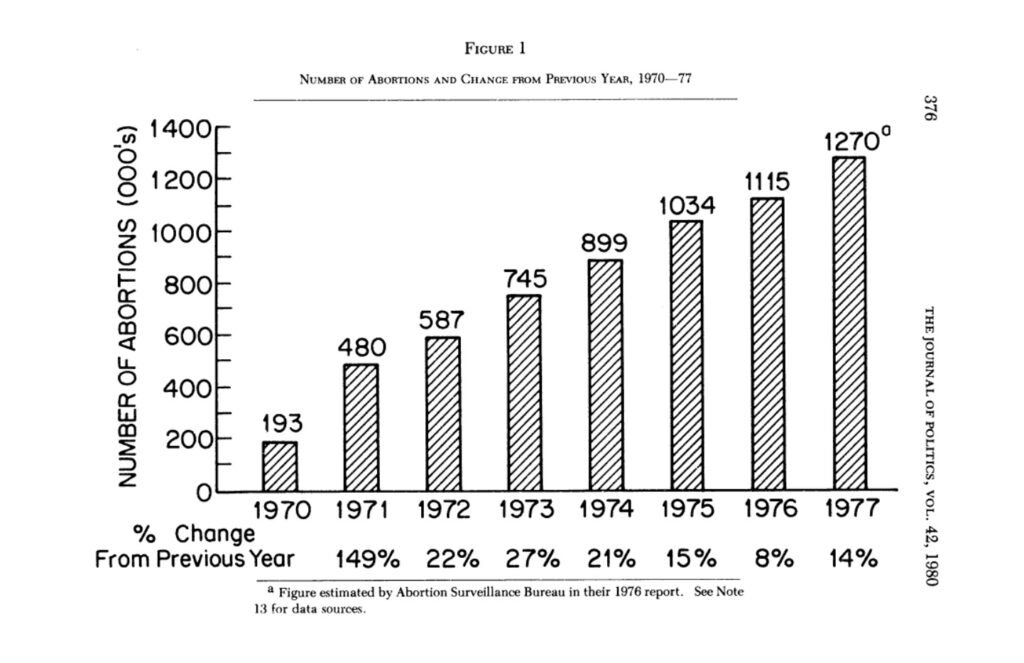
These statistics are according to Susan B. Hansen of The Journal of Politics
Roe V. Wade, a legendary court case wrought with controversy, has had a massive impact on the history books. The following paragraphs are meant to only inform of the statistics and dates leading up to and surrounding the court case.
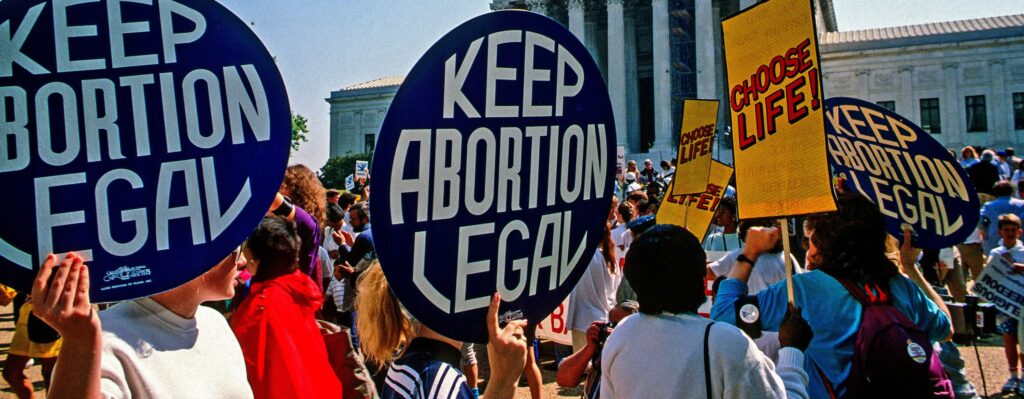
Credit: ©mark reinstein/Shutterstock.com
On January 22, 1973, after three years of deliberation, the Supreme Court ruled in a 7-2 decision that women have the right to have an abortion. This ruling took decisional power away from the government and gave it to the individual. This however, is by no means the beginning or end of this court case and to understand this case in its entirety, the history of abortion in the 13 Colonies and the United States must be examined.
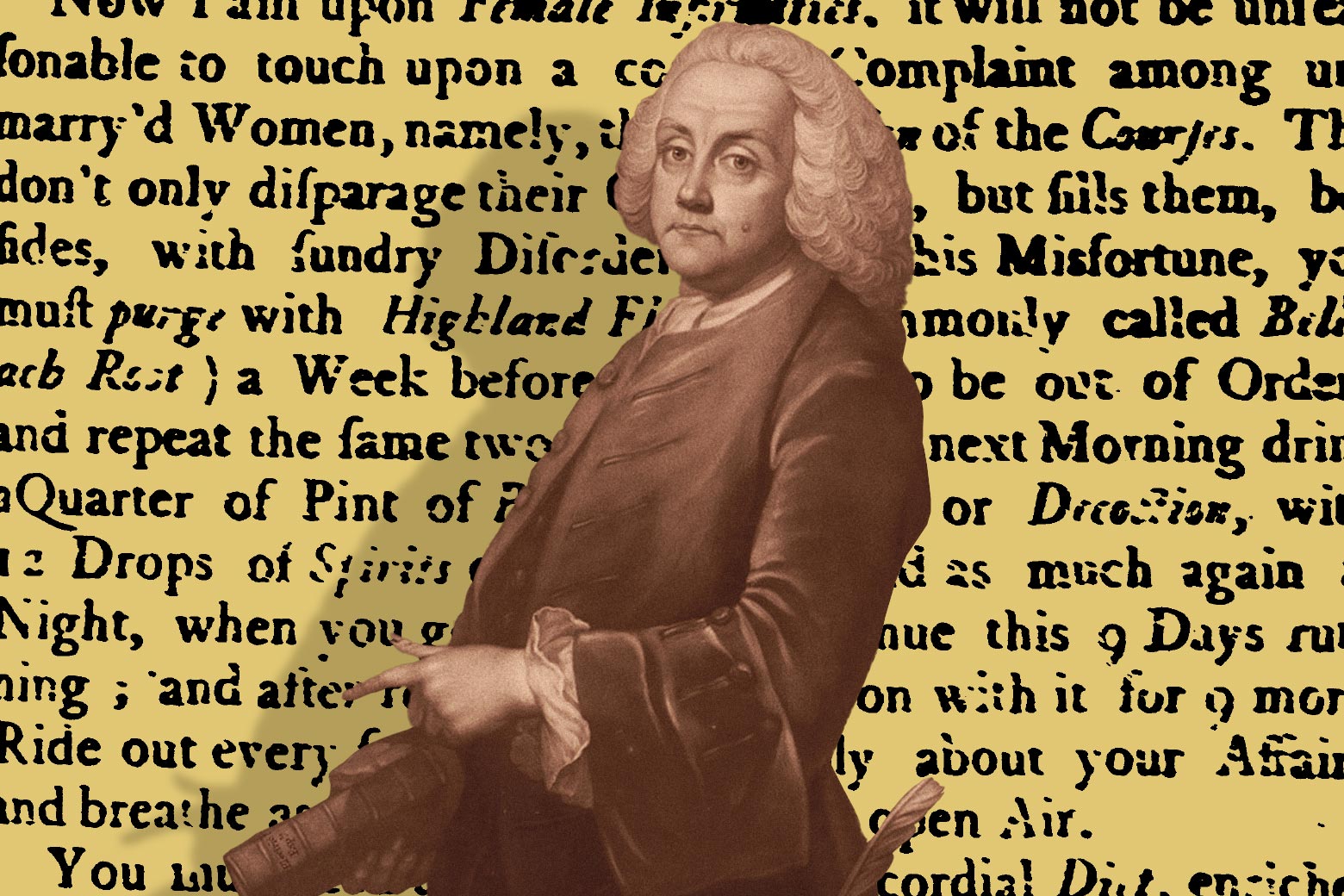
artist rendition of Benjamin Franklin
While English professor Molly Farrell of The Ohio State University was conducting research at the American Antiquarian Society in Worcester, Massachusetts, she came across a book published by Benjamin Franklin in 1753 that detailed how to conduct an “at home” abortion.
In an interview with PBS Newshour Farrell states, “it’s remarkably explicit, actually. It’s really direct.”
The book titled, The American Instructor contains a menagerie of different recipes but the one that caught the eye of Professor Farrell was a section labeled “SUPPRESSION of the COURSES.”
Farrell says “this is for young, unmarried women, this is a problem that they usually have. And it says that they should not long for pretty fellows, or any other trash whatsoever, basically what got you, you know, into this mess was longing for pretty fellows.”
Farrell ends with, “the practice [was] deeply rooted in American history.”
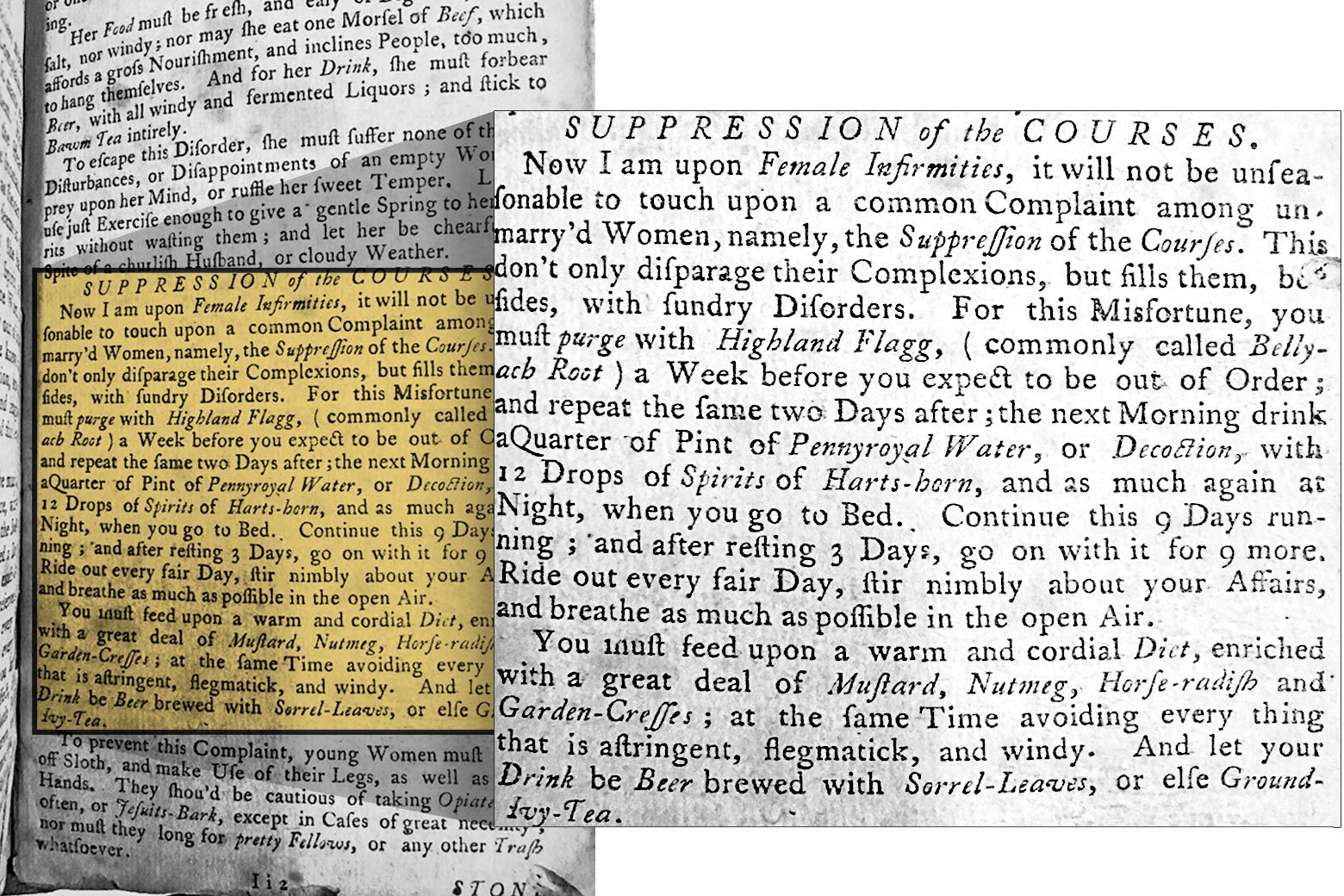
Farrell goes on to examine another one of the founding fathers and their mentions of abortion.
“Thomas Jefferson mentions, again without any kind of judgment in his 1785 notes on the state of Virginia, that indigenous women in Virginia routinely induce abortion through the years use of particular herbs. So he mentions here the women very frequently attending the men in their parties of war and hunting, child-bearing becomes extremely inconvenient to them. It is said therefore, they have learned to the practice of procuring abortion by the use of some vegetable.”

Elizabeth Pope, Curator of Books and Digitized Collections at the American Antiquarian Society, finds an interesting quote in a sex manual and midwifery book from 1788 titled, Aristotle’s Masterpiece: “Midwives are admonished by no means to prescribe such medicines as will cause abortion though desired, which is a high degree of wickedness and may be termed murder.”
What makes this interesting according to Pope, is that “out of those more than 60 editions, only a few handful have those directions to midwives that I mentioned that describe abortion as murder, but even in that instance they do seem to be saying that midwives were providing abortions to people who had desired them.”
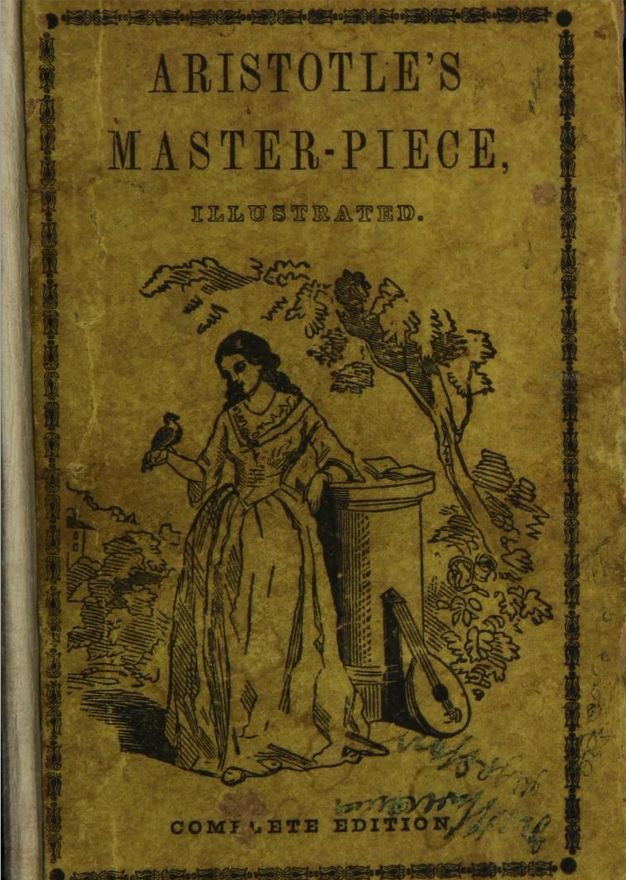
An additional facet of abortion that Farrell relates is that of enslaved women.
“We have testimony of enslaved black women talking about how, yes, when they would want to induce a miscarriage. They would take turpentine for example, and the enslavers knew about this and then so they would reformulate the turpentine that they use to make sure that it wouldn’t work in that it actively trying to stop them because of course that would reduce the value of their property.”
This may seem off topic from a perspective of the statistics and dates of Roe V. Wade but it is necessary to understand that for quite some time in the history of the United States, abortion was legal, made available through articles, and had minimal, if any moral dilemmas.
The question is, why did abortion become something so controversial?
It is commonly cited that after the Civil War, midwives were phased out in favor of male doctors. The doctors seemed to lack the expertise and know how those they were replacing and abortions became criminalized. In the late 1800s abortions had become vilified and with that came ill feelings toward the practice. By the turn of the 20th century, abortions had become illegal in all 50 states.

Here are some quick dates:
1600s – First Nation Peoples were practing abortion in what is now the United States
1652 – a single case of abortion was prosecuted criminally in the Catholic State of Maryland
1753 – Benjamin Franklin publishes The American Instructor
1783 – Thomas Jefferson discuss the abortion practices of the First Peoples of Virginia
1788 – Aristotle’s Masterpiece is published
1800s – more articles are published related to abortion
1860 – anti-abortion laws were passed and these laws were more vigorously enforced
1910 – abortion was banned nationwide
1930s – deaths increase from unsafe abortions
1955 – Planned Parenthood conference on abortion legalization
1962 – children of Thalidomide
1960s – 10 states altered abortion laws
1970 – New York legalized abortion
1973 – Roe V. Wade
A Final Word
Abortion has been controversial ever since its inception. The discussions and the connotation it has today are likely to change as time goes on, but I have tried my best to present the precursors of Roe V. Wade in a truly neutral light with limited adjective use. I tried to give a brief history of some of the events that led to the court case but this is by no means a comprehensive list. This was not a topic I was entirely comfortable with in the beginning, but researching this made Roe V. Wade and the conversation at hand easier to understand. Thank you for reading.
Tyler V. Gupton
[1] “Abortion in U.S. History.” Planned Parenthood Action Fund, Planned Parenthood, https://www.plannedparenthoodaction.org/issues/abortion/abortion-central-history-reproductive-health-care-america.
[2] Cynthia A. Kierner, and Poggi. “Perspective | a 1792 Case Reveals That Key Founders Saw Abortion as a Private Matter.” The Washington Post, WP Company, 19 July 2022, https://www.washingtonpost.com/made-by-history/2022/07/19/1792-case-reveals-that-key-founders-saw-abortion-private-matter/?utm_campaign=wp_main&utm_medium=social&utm_source=facebook&fbclid=IwAR3Ql-iZzXlunKaMD638_Scw95PScr2o3VA8s_hfRJTj2u3Q2L9d32Ir5vk.
[3] Hansen, Susan B. “State Implementation of Supreme Court Decisions: Abortion Rates Since Roe v. Wade.” The Journal of Politics, vol. 42, no. 2, 1980, pp. 372–95. JSTOR, https://doi.org/10.2307/2130465. Accessed 21 Apr. 2023.
[4] “Historical Abortion Law Timeline: 1850 to Today.” Planned Parenthood Action Fund, Planned Parenthood, https://www.plannedparenthoodaction.org/issues/abortion/abortion-central-history-reproductive-health-care-america/historical-abortion-law-timeline-1850-today.
[5] Lindsey, Treva B. “Abortion Has Been Debated in the U.S. since 18th Century,” The Ohio State University, 6 May 2022, https://news.osu.edu/abortion-has-been-debated-in-the-us-since-18th-century/.
[6] Solman, Paul, et al. “Early America’s Complicated History with Abortion Access.” PBS, Public Broadcasting Service, 31 July 2022, https://www.pbs.org/newshour/show/early-americas-complicated-history-with-abortion-access.
I like this perspective, especially the incorporation of a founding father’s text on abortion. In my paper I talk about the deliberate politicization of abortion by Evangelical Christians following the Roe decision – given the Protestant roots of the early U.S., it is clear that the default Christian position was not always anti-abortion. These specific sources invert the narrative of abortion in the U.S. today and exemplify the malleability of abortion in recent historical memory.
I find this timeline very interesting. In many topics pertaining to politics and the rights of people, progress seems to take a very linear arch towards justice. This timeline of abortion shakes up this notion entirely. During my own research, I discovered this same pattern of ignorant tolerance, institutional repression, legalization, and most recently, illegalization. Understanding the history of abortion as a story of progression and regression rather than a linear march towards progress really helps us all to contextualize the current state of abortion in the United States and also approach various related topics from a new angle.
This was a very interesting perspective on the history of abortion. Some of the specific facts came off as really surprising such as the fact that Benjamin Franklin wrote a book on how to conduct a safe at-home abortion. I really liked the fact that you included a quick timeline at the bottom of your article that made it extremely clear as to when all of the main points in your article happened. This aspect made everything else about your writing much easier to read and interpret. Great addition!
I really enjoyed your statistical overview. I thought you incorperated your sources very well and also had many visual aids that really helped engage me and improve my understanding. As someone who fixates on solid numbers, it was very interesting to see the myriad of statistics about Roe you had assembled.
myriad of statistics, dates, and other info*